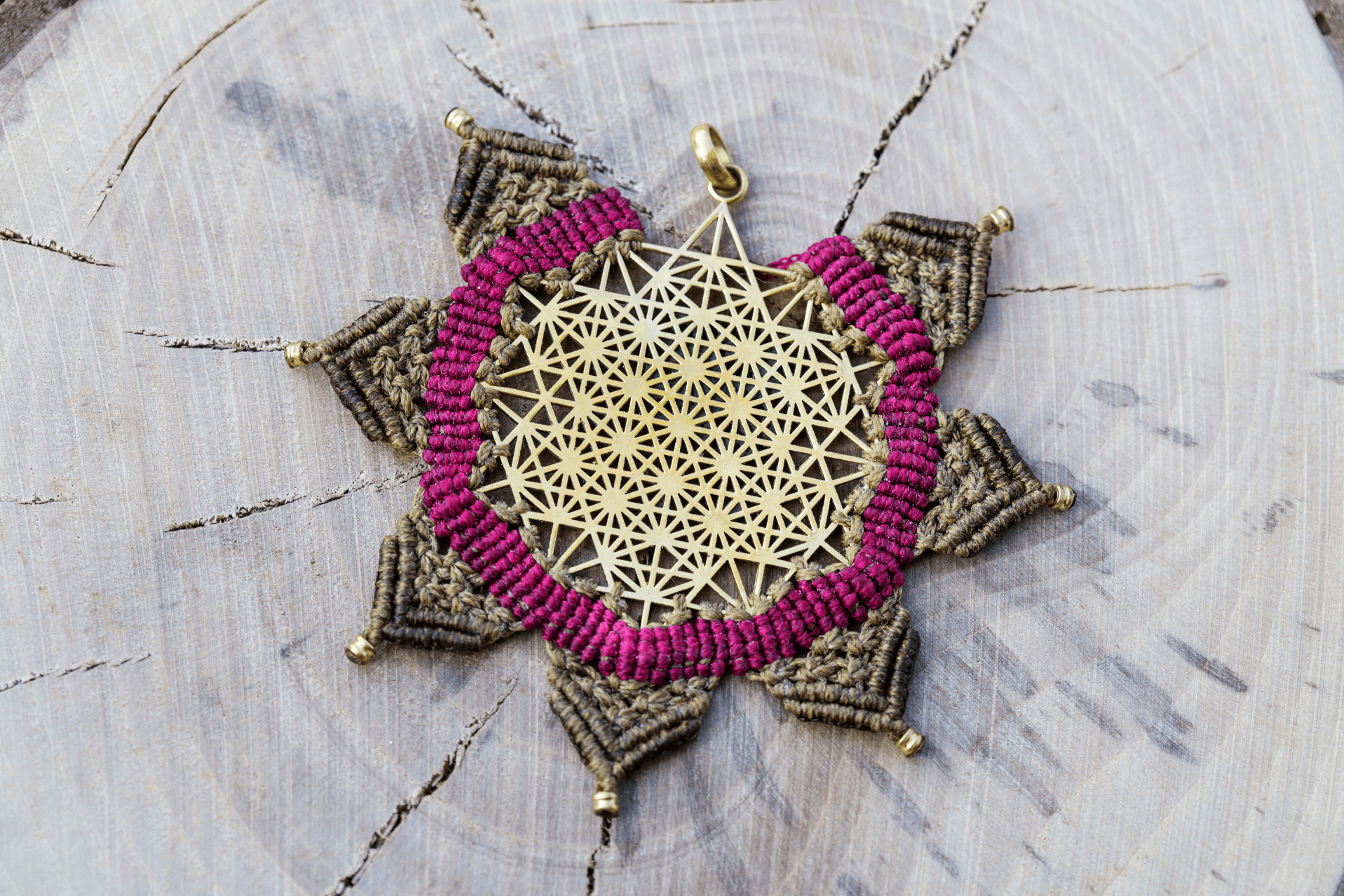
Table of Contents
As Jewelry Shopping Guide editors, we write about things that we love and we think you’ll like too. We often have affiliate partnerships, and may generate some revenue from these links at no cost to you.
The mandala symbol is one of the most common motifs in Asian art that’s rapidly gaining popularity in jewelry designs.
Made of repetitive patterns and symmetrical shapes, the mandala is a sacred and spiritual symbol in Eastern cultures. Although mandala jewelry is worn by people from all corners of the globe, not many know about the symbolism and meaning behind it. Let’s take a closer look at its meaning and significance in jewelry.
What Is the Mandala Symbol?

The term ‘mandala’ means ‘circle’ in Sanskrit, since the symbol is typically in the shape of a circle with circular geometric patterns.
It’s composed of many other shapes as well, including smaller circles, flower-shaped petals, and religious symbols. For example, the eight-spoked wheel, also known as the ‘dharma wheel’ can be seen on mandala designs. All these symbols spread out from its center. Some designs are geometric and symmetrical, while others are organic and free-flowing.
Often painted on cloth or paper or engraved in stone or bronze, the mandala symbol is often used as a symbol for meditation since it’s believed to clear the mind and aid in concentration.
It’s believed that the symmetrical shape of this symbol brings balance and harmony to one’s life, making it an effective tool for meditation. The mandala is also often used in ceremonial rituals, sacred art, and worship as well as for spiritual healing.
Types of Mandalas
There are many different designs of mandalas found in various parts of the world including Bhutan, India, Nepal, Indonesia, China, and Japan. Here are the most popular and main three types of mandalas:
1. Healing Mandala
This type of mandala is mostly used for meditation purposes. It’s also used to aid in concentration and focus, deliver wisdom and evoke peaceful, calm feelings.
2. Teaching Mandala
The teaching mandala is highly symbolic with every line, shape, and color representing a different aspect of religion or philosophy. It also serves as a colorful mental map for its creator.
3. Sand Mandala
Mandala sand art was first mentioned in the book The Blue Annals, in which the mandala was a way of unlocking the power of the universe through meditation. The goal of this art is to gain wisdom and reach enlightenment by healing and purifying one’s mind.
Navajo cultures and Buddhist monks have long used sand mandalas to show the impermanent nature of life. In fact, Buddhist monks would spend hours building a mandala, in which every grain of sand is placed on pipes in order to create intricate patterns, textures, and shapes. Once it’s done, the art is destroyed to show their belief that nothing is permanent.
What Does the Mandala Symbol Mean?
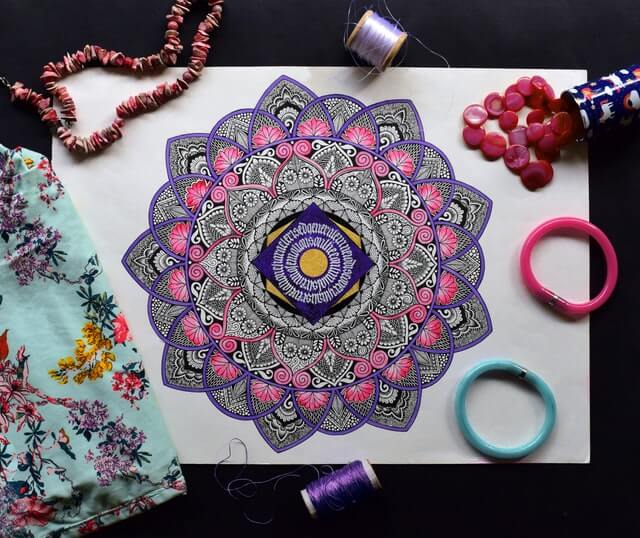
The mandala has a spiritual significance in Eastern religions but is now adapted in the West and other cultures as a universal symbol. Here’s a look at the various meanings behind it:
1. Symbol of the Universe
In many religions and cultures around the world, the Mandala is regarded as a cosmic map, representing the universe. The circular designs of the symbol represent the concept that everything is connected to everything else in the universe. It also reflects the harmony and order of the cosmos.
Some people believe that the symbol will allow them to connect with the cosmic spiritual power, as well as with certain gods and deities. When used in jewelry, it can also serve as a reminder of one’s place in the universe, as well as his or her relationship with the divine.
2. A Path Towards Enlightenment
In Buddhism, the mandala symbol is closely associated with one’s journey toward enlightenment. Depending on the symbol’s design, each layer can represent a certain quality that needs to be mastered.
In some esoteric traditions, the center of the mandala is seen as the home of a deity that can be summoned through meditation, incantation, and rituals.
3. Transformation and Guidance
As mentioned earlier, the mandala is a popular symbol that’s believed to assist in meditation and reflection. It’s said that the symbol’s rich colors and intricate design can distract the mind, helping one to forget the material world and venture on a spiritual journey. It’s a common belief that anyone who uses the mandala for meditation will experience some kind of inner transformation.
In the West, it’s regarded as a symbol of positivity that helps people to transform their negative thoughts into positive ones. If someone is battling with negative energy, wearing a piece of mandala jewelry can go a long way in inspiring them to focus on good vibes, attracting positive energy into their life.
The Mandala Symbol in Jewelry
The mandala motif in jewelry isn’t just an exotic trend, but a symbol filled with spiritual meanings. If you’re looking for a stylish and meaningful piece to add to your jewelry collection, here are some of our best picks:
1. Mandala Earrings
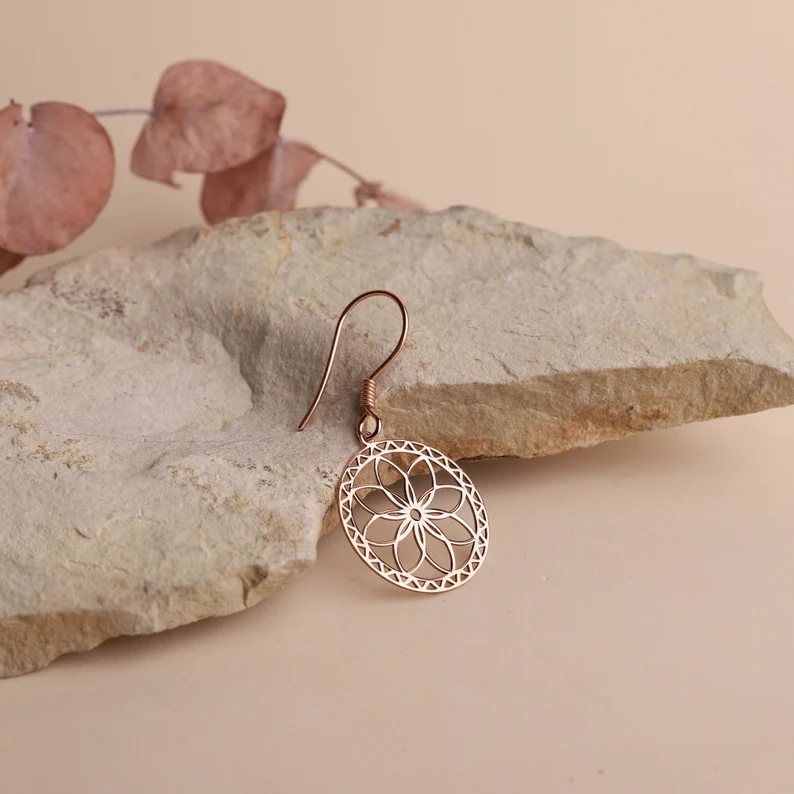
From studs to drop earrings and chandeliers, the mandala design makes for gorgeous statement pieces. Some styles have a more oriental look, while others have a modern and geometric appeal.
A pair of mandala studs can be a great way to add some flair to your everyday looks. There are many options to choose from, including hoop earrings, creoles, and drop and dangle styles that make stunning party accessories.
2. Mandala Necklace with Pendant
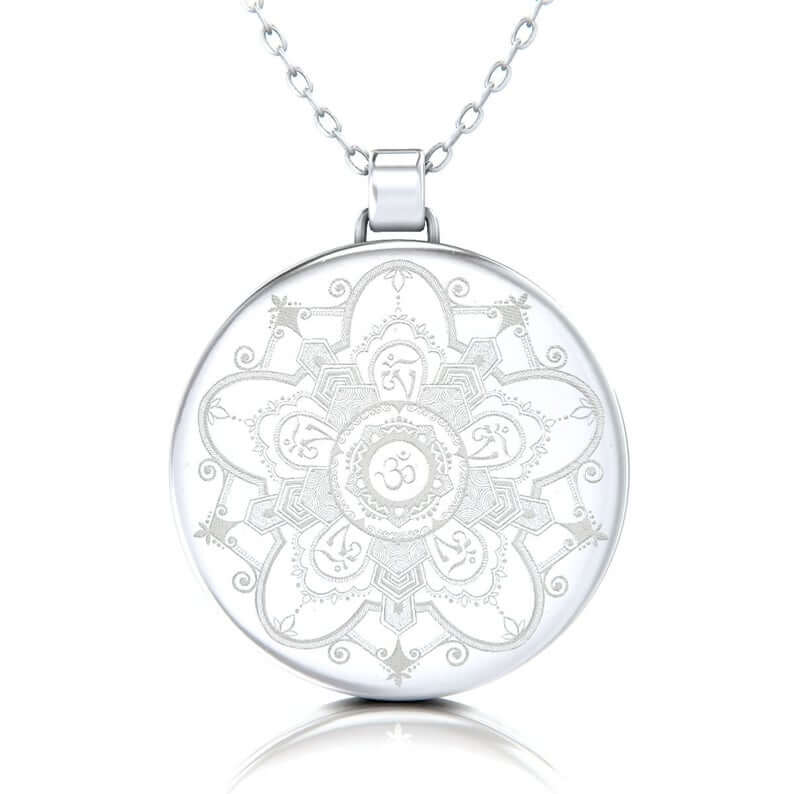
From intricate cutout pendants to engraved lockets, mandala pendants can be kept close to the heart. You can find it featured on trendy coin necklaces and medallions, which are perfect for layering.
For minimalists, there are many mandala necklace options in dainty, architectural styles. If you’re a vintage lover, consider a filigree or cutout pendant with precious stones and for a more personal touch, you can have your birthstone featured on the pendant as well.
3. Mandala Bracelet
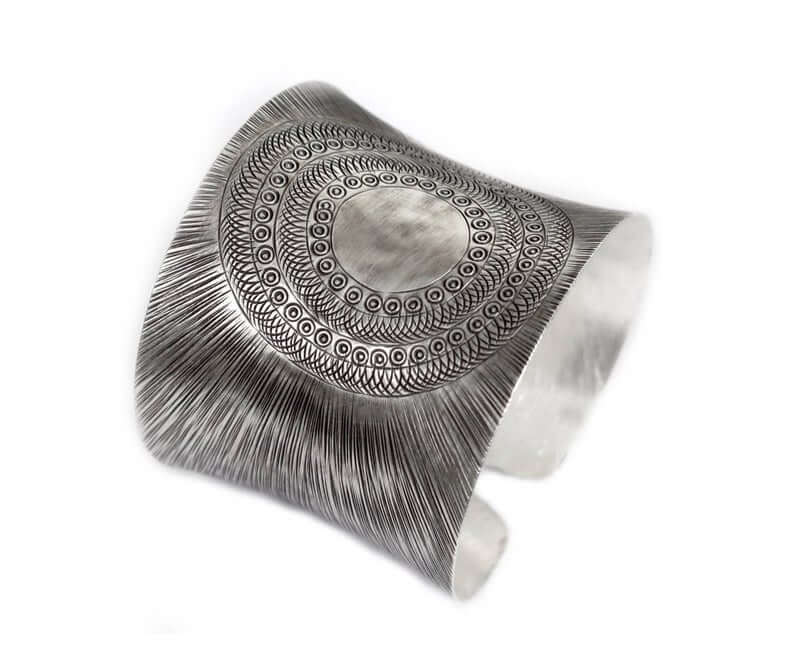
Mandala bracelets can be found in a variety of styles, from minimalist to tribal and bohemian. If you’re looking for a classy alternative to the typical string or chain bracelets featuring the mandala symbol, consider going for a wide cuff bracelet instead that will add a modern, elegant touch to your look.
4. Mandala Ring
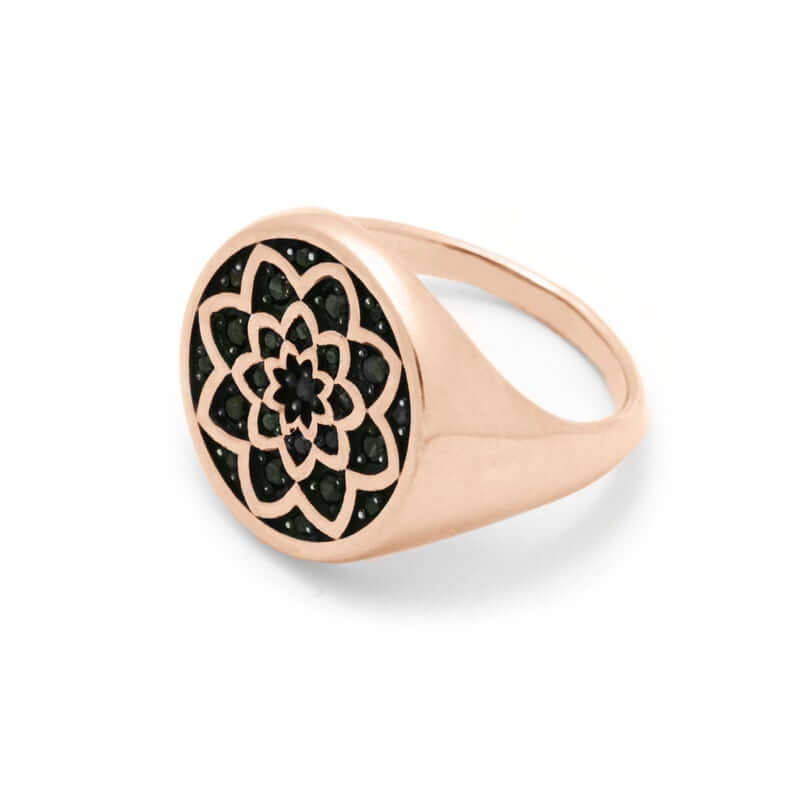
The mandala symbol is popular in ring designs, from cocktail rings to engagement and signet rings.
Lotus-inspired mandala rings look trendy, but you can also find elegant engagement rings that feature diamonds and other gems.
There are also signet rings that look modern, vintage, or mystical, so you’re sure to find something that suits your style.
5. Mandala Hair Jewelry
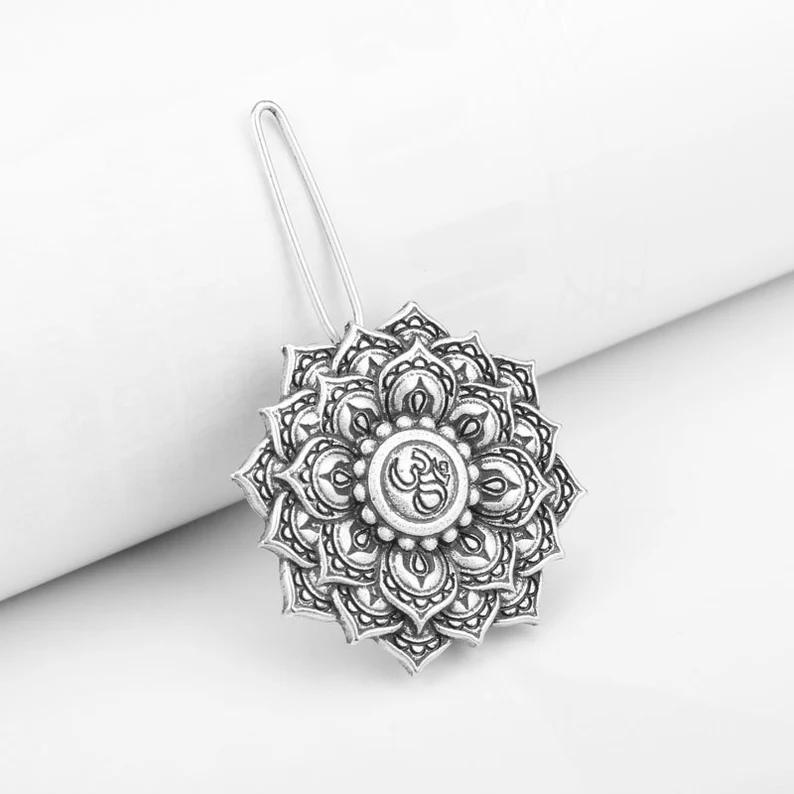
Mandala hair jewelry comes in many different styles and designs. While crocheted designs are common, you can also find hair chains crafted from precious metals and stones.
Some feature cutout and embellished designs, while others are decorated with colorful gemstones and enamel.
History of the Mandala Symbol
One of the most ancient art forms, the mandala has been found in many cultures and religions, as well as in psychology. It was the creation of one of the main religions in the world: Buddhism and made its first appearance in the ancient Hindu text, the ‘Rig Veda’ somewhere between 1500 to 500 BCE (the exact details of its origin remain unknown).
During the end of the Vedic Period, the symbol was used by Jains and the Charvaka who incorporated it into their own traditions. Later on, as Buddhist monks traveled via the Silk Route, they brought the symbol with them to other parts of the world. As a result, the mandala symbol became popular in many other countries and cultures including China and Japan.
1. The Mandala in Different Cultures
Some speculate that the concept of the mandala can be found in Native American symbolism, known as the ‘sacred hoop’. While many regard the symbol as Eastern in origin, similar symbols can be found in almost every civilization.
In some regions, a mandala is solely a form of art, used by artists to create masterpieces such as paintings, dinner plates, and carpets. The traditional symbol is sometimes created using kaleidoscope-like art, fractal designs, and geometric patterns.
2. The Mandala Symbol in Psychology
The mandala symbol became popular in the West after Swiss psychologist Carl Jung visited a monastery in India. Here, he saw the mandala artwork used by the monks for meditation and found it inspiring. He then popularized the symbol which became widely used in meditation, therapies, and yoga.
Wrapping Up
The mandala is regarded as a sacred symbol in Hinduism and Buddhism but is now a universal symbol in jewelry. While it represents the universe and the journey toward enlightenment, many people prefer to wear mandala jewelry to represent spiritual transformation, guidance, and positivity. If you’re looking for a piece of jewelry that’s both artistic and rich in symbolism, mandala jewelry would be the perfect choice for you.










